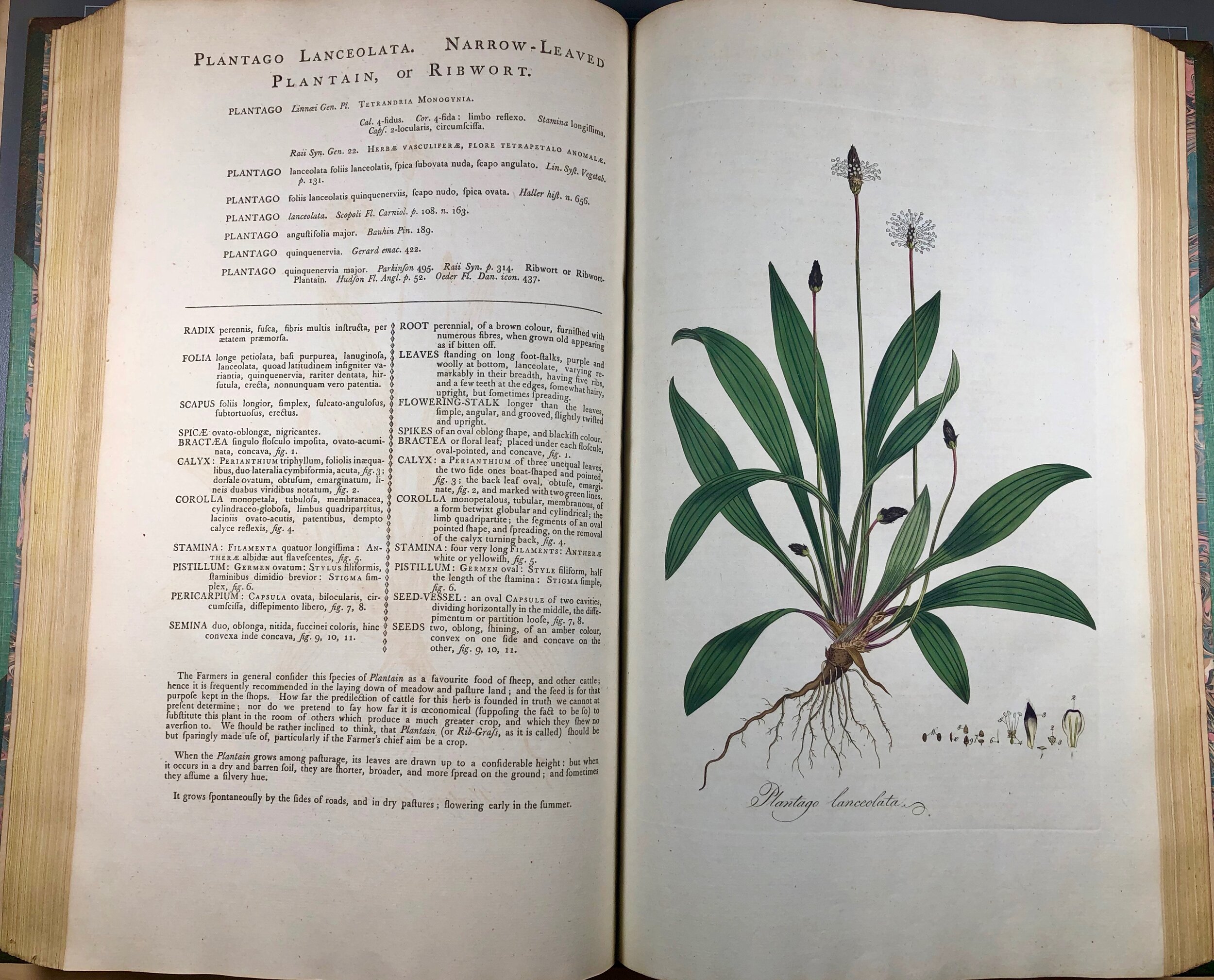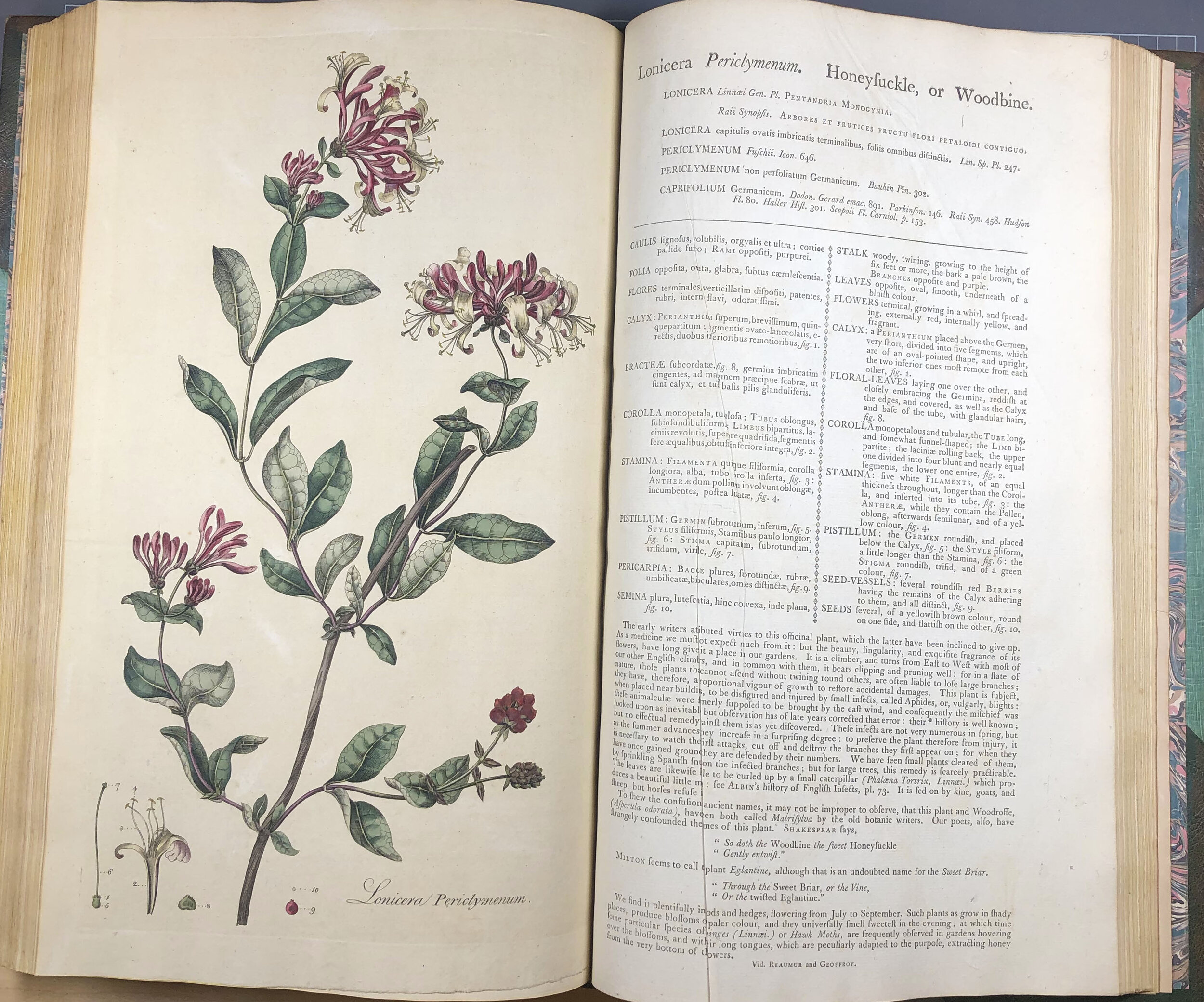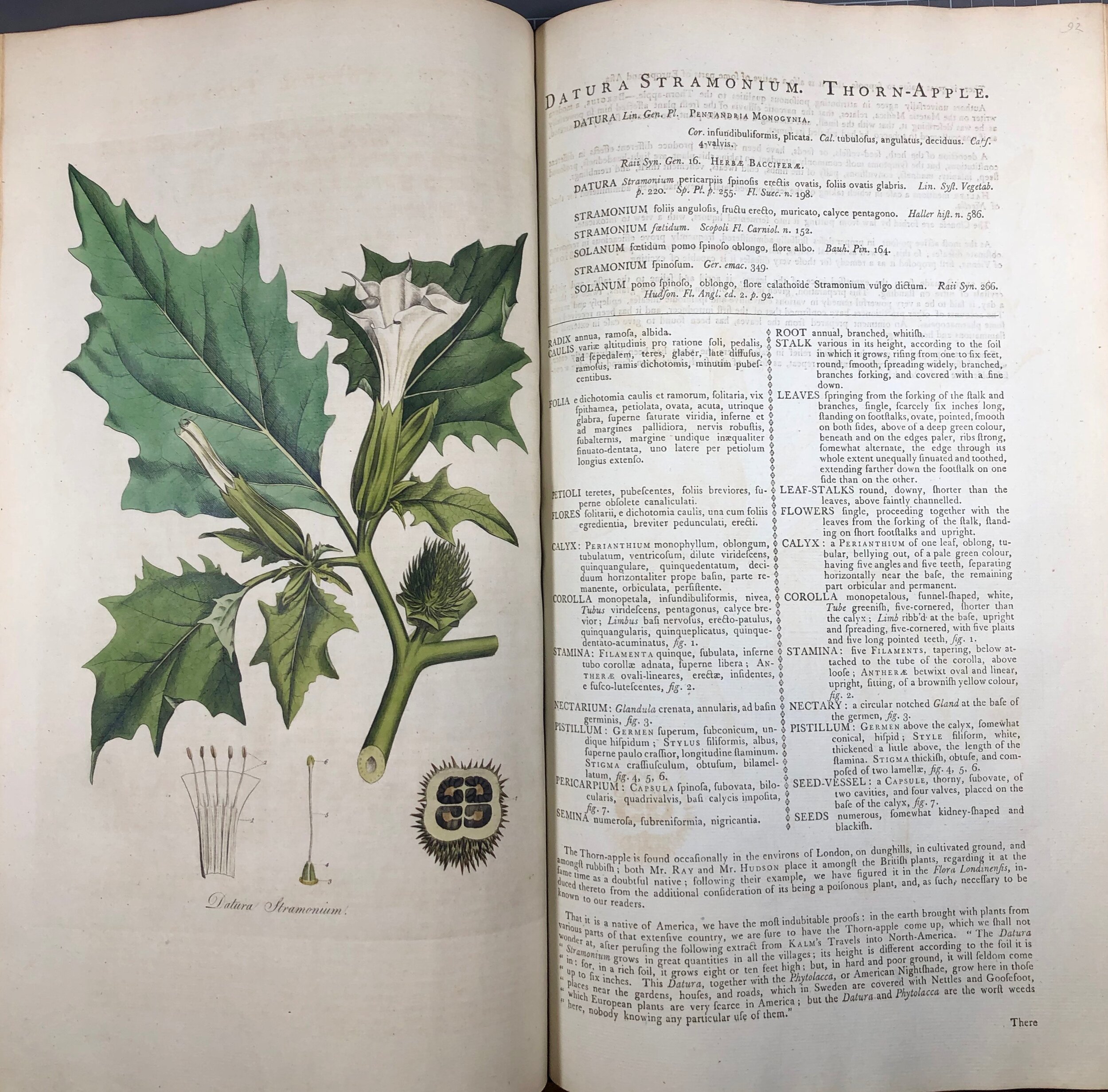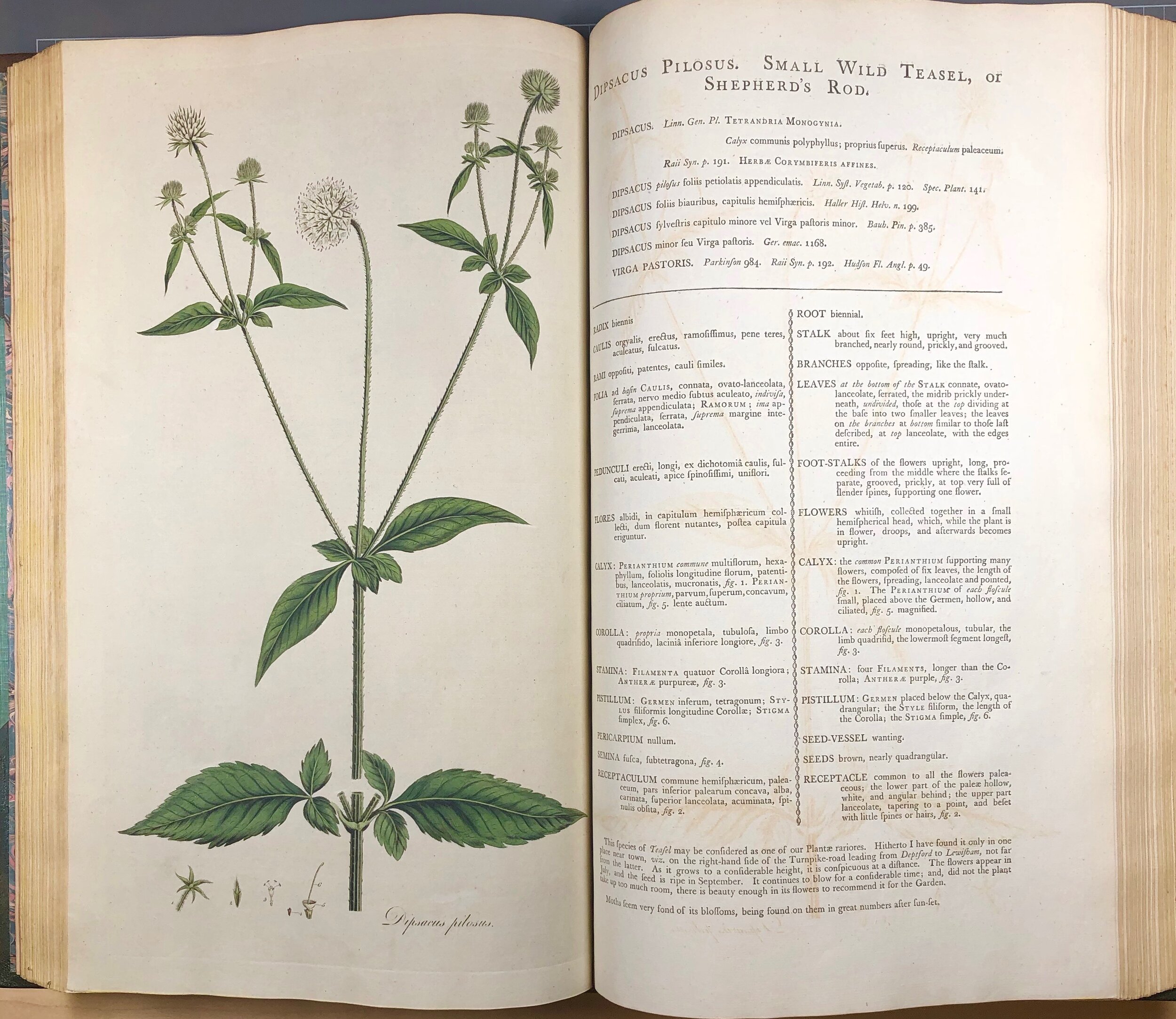A Botanical Legend: William Curtis and his Botanical Magazine
Emily Ellis
Botanical research never gets old. Scholars and scientists continue to make important new discoveries about the amazing ways that plants adapt and flourish, and one of the best resources for that research is Curtis’s Botanical Magazine: the world’s longest running, continuously published botanical journal.
Some of the Curtis’s Botanical Magazine volumes in the Oak Spring Garden Library.
Founded in 1787, the magazine has served as a forum for the world’s botanists, horticulturists, conservationists, and fans of botanical illustration for over 200 years. The magazines are among the most numerous volumes in the Oak Spring Garden Library collection, allowing visiting scholars and artists to see how botanical illustration and research has developed over the past two centuries.
The man behind the magazine, botanist William Curtis, was born on this day in Hampshire, England in 1746. To celebrate his birthday, we’re talking about his short but impactful life - and the legendary publication that carries his name.
A copy of Vol. III of Curtis’ Botanical Magazine, with a note written by its former owner, George Washington.
The man himself, in Vol. I of The Botanical Magazine (1787)
William Curtis worked as an apothecary before discovering that his true passion lay in the garden. As a young man, he devoted himself to the study of plants and insects, publishing his first book, Instructions for collecting and preserving insects; particularly moths and butterflies, at the age of 25. He established himself among London’s natural historians by serving as Demonstrator of Botany at the Chelsea Physic Garden, and later by opening the London Botanic Garden in Lambeth, where he treated visitors to lectures on botany. While he grew over 6,000 species of plants from all over the world in the now-defunct garden, he was particularly interested in showcasing plants native to the London area and discussing their cultivation and uses.
Several years later, Curtis’s fascination with urban flora resulted in his 6-volume Flora Londinensis (1777-1798), a beautifully illustrated work that featured plants common in and around the city. (See images of the Oak Spring Garden Library’s copy below.) Although accompanied by scientifically accurate, hand-colored copper engravings by leading botanical artists including James Sowerby, the book was not a success: at the time, public interest skewed towards the exotic plants that European botanical explorers were bringing back from trips abroad. Despite the praise the publication received from Curtis’s colleagues, it sold few copies.




Recognizing the need for a more affordable botanical publication to document those discoveries - and the potential income it could generate - Curtis started The Botanical Magazine; or, Flower-Garden Displayed, in 1787. Copies contained three to four scientifically accurate engravings and descriptions of plant species, including information about cultivation and growth habits. It quickly became popular and profitable, particularly among gardeners and nurserymen interested in growing and selling the new plants; Curtis remarked that it had brought him much “pudding and praise."
After Curtis’ death in 1799, the magazine was renamed in his honor. Today, it is published by Wiley Blackwell for the Royal Botanic Gardens, Kew, and has been edited by a succession of Kew directors and other leading botanists over the decades.
Pages from the John Bradby Blake Special Part, December 2017
In addition to housing an entire run of Curtis's magazines, the Oak Spring Garden Foundation had the honor of being featured in a special volume in 2017 devoted entirely to materials from the Oak Spring collection. Earlier that year, OSGF hosted a conference on materials created by 18th-century English botanist John Bradby Blake and Chinese artist Mauk-Sow-U, which are housed in the Oak Spring Garden Library. The research discussed at that conference was published in the magazine, including a piece coauthored by Blake scholar Josepha Richard, one of our 2020 Stacy Lloyd III Fellows.
Along with such historical research, Curtis’s Botanical Magazine also publishes pieces on important present-day issues such as biodiversity loss, food security and climate change - continuing to influence new generations of scientists, scholars, artists, and plant-lovers.
You can learn more about the quarterly publication and its present-day contributors here. If you’re interested in browsing through editions of this important historical publication, check out the digitized volumes and illustrations from our friends at the Biodiversity Heritage Library.
Banner illustration from Vol. 1 of The Botanical Magazine (1787)




